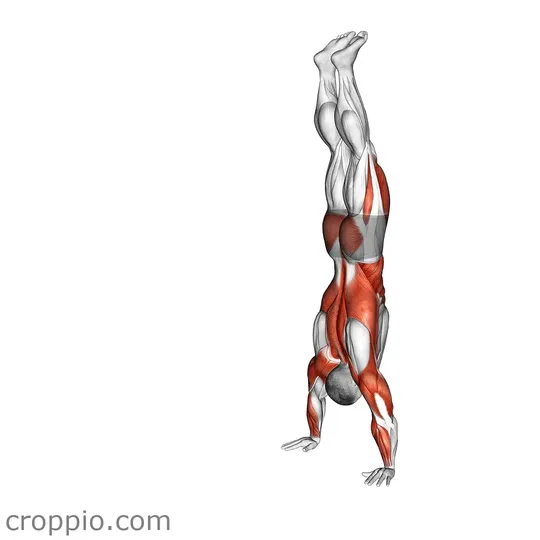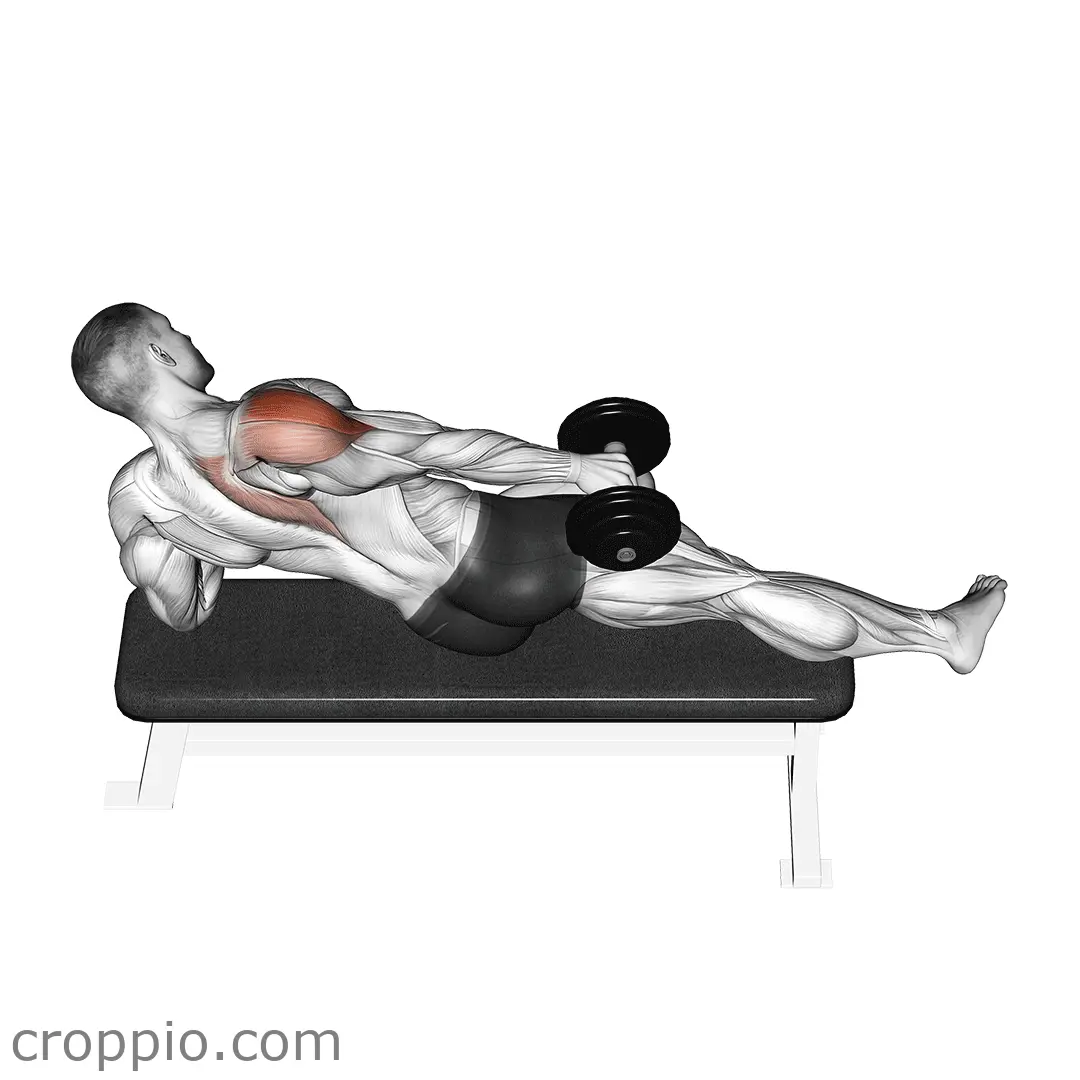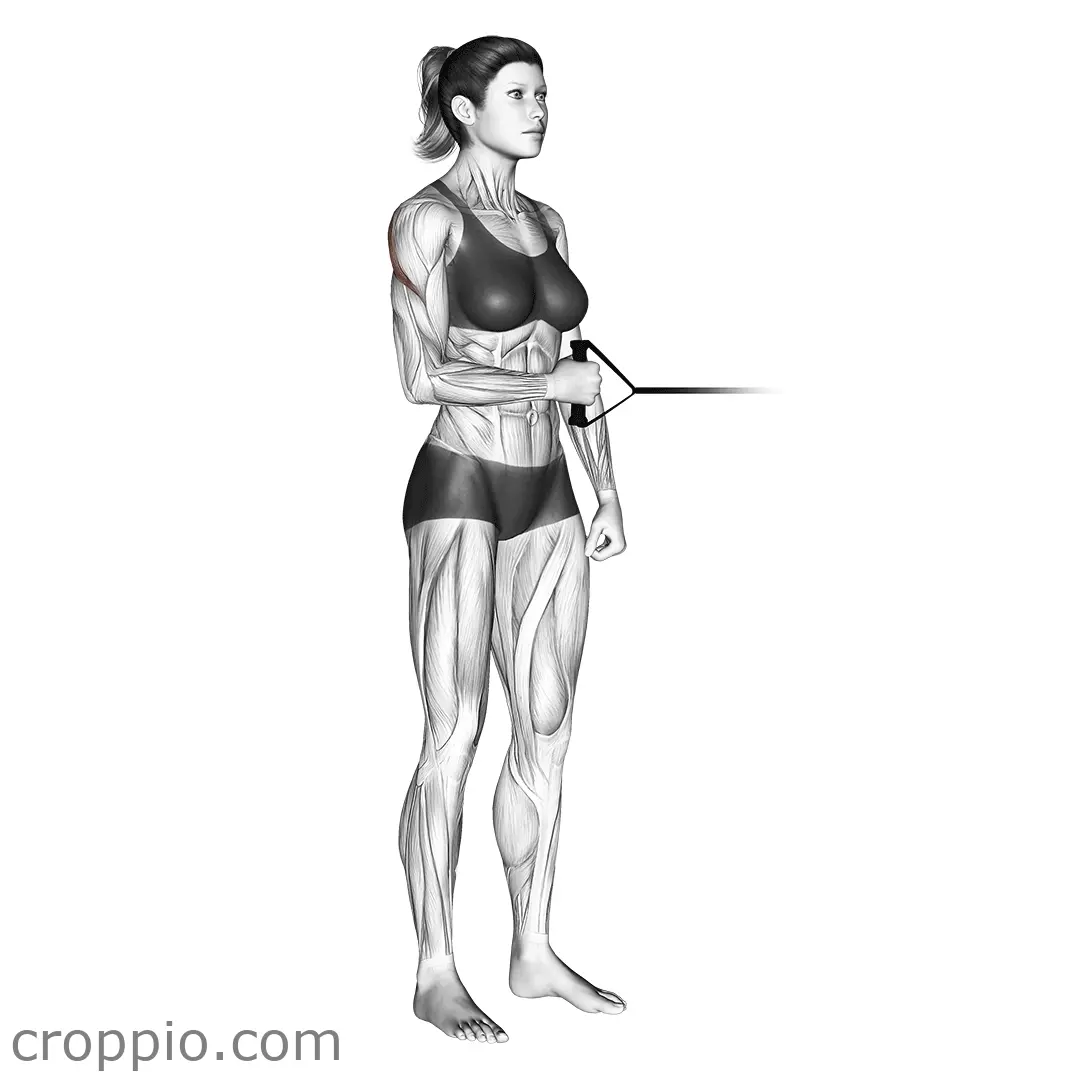Handstand Walk

Muscles Involved
The handstand walk is an advanced exercise that primarily targets the upper body, core, and shoulder muscles. The primary muscles engaged during this movement include the deltoids, trapezius, and pectoralis major, which work together to stabilize and support the body upside down. The triceps are also heavily utilized for arm extension and support. Additionally, the core muscles, including the rectus abdominis and obliques, play a crucial role in maintaining body alignment and balance throughout the movement. Secondary muscles involved include the quadriceps and calves, which assist in controlling the lower body during the walk.
Top Mistakes
- Failure to engage the core: Neglecting to tighten the core can lead to instability and poor form.
- Incorrect hand placement: Placing the hands too wide or narrow can throw off balance and control.
- Arching the back: Allowing the back to sag or arch can lead to unnecessary strain and reduce efficiency.
- Avoiding a proper kick-up: Rushing the kick-up into the handstand can lead to improper alignment.
Execution Tips
- Start by practicing a stable handstand against a wall to build strength and confidence before attempting the walk.
- Ensure your hands are shoulder-width apart and fingers are spread for better support and grip.
- Keep your core engaged and hips stacked over your shoulders to maintain a straight line from head to toes.
- Initiate movement by shifting weight from one hand to the other, keeping legs together and slightly lifted.
- Focus on quality over quantity; it's better to take slower, controlled steps than to rush the movement.
Workouts
The handstand walk can be a challenging yet effective component of your workout routine. Begin with 2-3 sets of 5-10 steps of handstand walking, ensuring to take breaks as necessary to maintain form. For strengthening exercises to complement the handstand walk, incorporate wall walks, shoulder taps, and pike push-ups into your routine. Consider allocating a specific handstand skill day each week to focus on form, balance, and endurance.
Conclusion
The handstand walk is not only a visually impressive skill but also offers numerous physical benefits. Strengthening the shoulders, core, and arms enhances overall upper body stability and control. Additionally, mastering the handstand walk improves coordination, balance, and spatial awareness. Whether you're an athlete or a fitness enthusiast, incorporating the handstand walk into your training can significantly elevate your performance and body awareness.



